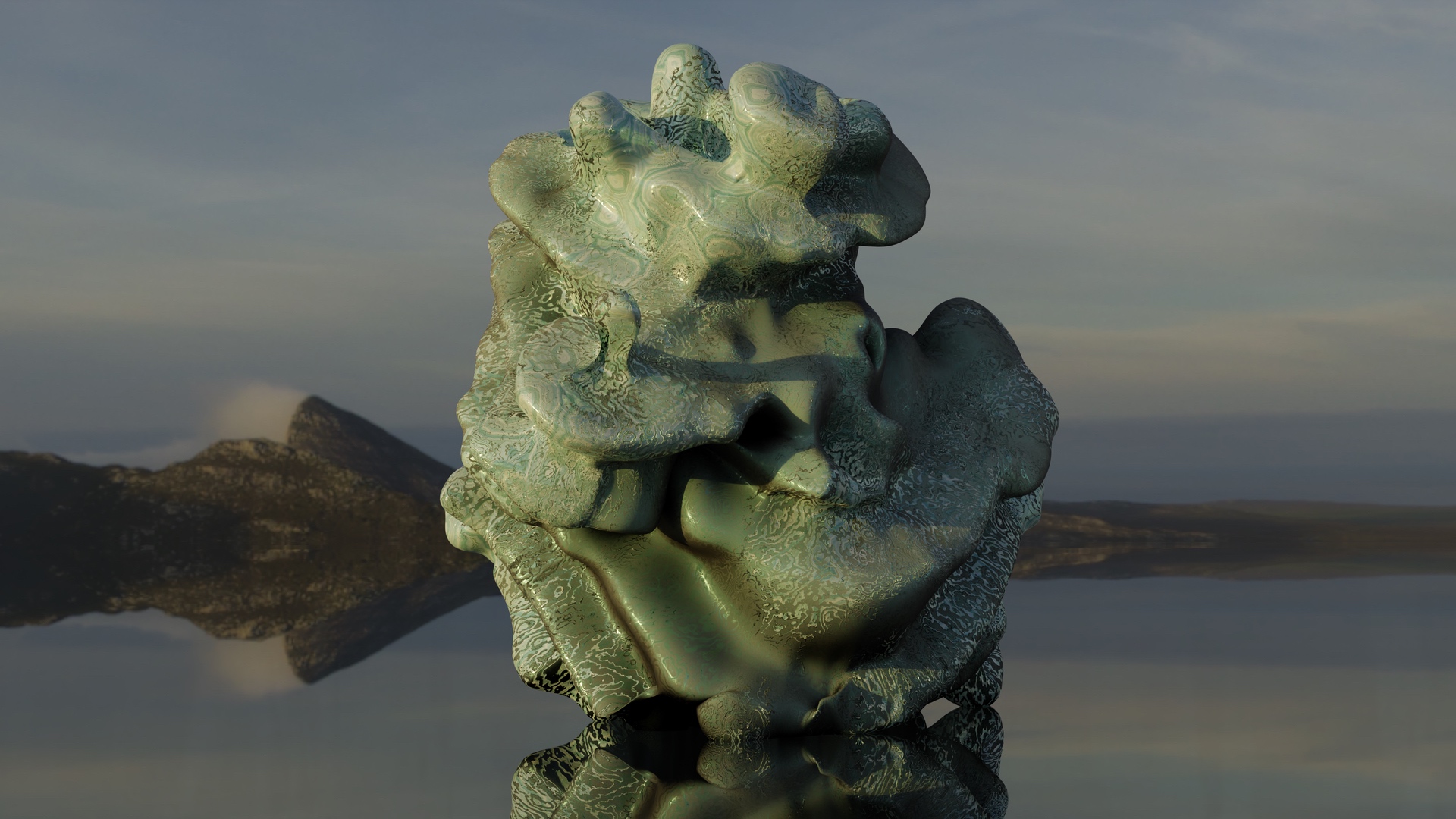In Azimuth, audiovisual artist Sarah Badr channels a tension between organic and synthetic forms, digitally rendering pulsating alien objects and shimmering surfaces that change and transform in a responsive, symbiotic relationship with the tactile sounds she corals into the intricate texture of her compositions. Resolutely synaesthetic, Azimuth oscillates between the recognisable and the impossible, a dichotomy that is suggested in the work’s title. An azimuth, in geometry, is an angular measurement in a spherical coordinate system and is derived from the Arabic word السَّمْت. When applied in astrology and used as a celestial coordinate, an azimuth is the horizontal direction of a star, or other astronomical object. In one sense the title, and the work, is functional, referring to a unit of measurement, but when applied to the world around us it becomes ontological, a marker for locating an object in physical, or artificial, space.
This duality is not only expressed sonically and aesthetically, with marriage of Badr’s sounds and visuals, but also conceptually. Each of the work’s six parts are also titled in ways that seem to cohere external concepts within the graphical and audio palette of artist’s audiovisual practice. ‘Terra Nullius’ is a Latin phrase meaning ‘land belonging to nobody’, and is sometimes used a legal definition in international law to justify claims that territory might be acquired by a state’s occupation of it. This seems particularly resonant with the work’s original presentation as part of the fourth instalment of the Nomadic Signals series by Leyya Tawil, ISSUE Project Room’s 2020 Suzanne Fiol Curatorial Fellow. The programme explores what Tawil describes as the “diasporic imaginary”, charting how “sounds change in the diaspora; how they tether to their environment, accumulate, synthesise, adapt.”



‘Aphercotrophism’ is an antiquated biological term that describes the movement or growth of an organism away from an obstruction. Not only does this refer to the organic movements and textures of the shifting organisms of Badr’s digital landscapes, but its’ dissonance in relation to a computer-generated ecosystem amplifies the potential of Azimuth’s speculative environments, in which Badr has made space for outmoded ideas. Finally, ‘Finite State Machine’ refers to a mathematical model of computation often used to prove computational theories relating to automation, a nod to Badr’s generative graphical technologies, but also functions as political metaphor, a self-reflective category for transitory state apparatuses within Tawil’s diasporic imaginary. “Realism and naturalism imply a strong criterion for something to be real or natural: the world is just as mathematics and the sciences describe it,” explains Badr.
“Nature obeys rules from which patterns arise, denoting that something is organic in nature — and therefore real. In a technologically advanced postmodern society, what is real and what is fiction are seamlessly blended together, so that there is no clear distinction between where one ends and the other begins. Azimuth is an immersive biomorphic model of the entangled orders of simulation. It is a reflection of a basic natural reality while masking basic reality — the idea of nature. It masks the absence of a basic reality, while bearing no relation to any reality whatsoever. Hyperreality has connotations of a dystopian future – one in which we desire reality, but in the attempt to achieve it, we fabricate a false version and consume that as real instead. Azimuth is its own pure simulacrum: the real is no longer what it used to be. Just as the state of the real and natural is no longer what it used to be.”



Azimuth is showing as part of Listening To The Anthropocene, a group show at Coventry Cathedral, which is part of the 2021 Coventry Biennial. You can find more information and tickets here.
You find the score for Azimuth on Bandcamp. For more information about FRKTL and her work you can follow her on Instagram and visit her website.
Watch next: Fact Residency – Actual Objects




